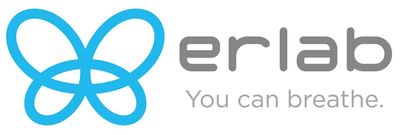Challenging the Status Quo Can Benefit Your Lab
Re-examining assumptions about equipment safety, cost savings, and energy consumption
Beyond day-to-day operations, many laboratories have long-term goals of improving safety, reducing operational costs, and minimizing their environmental impact with a lower carbon footprint. These are important and ambitious goals with benefits for everyone within the organization. However, it can be difficult to achieve these goals while working within the confines of existing equipment and technologies. Change can be daunting, especially when it involves challenging existing assumptions that are firmly rooted within the organization. However, taking time to re-examine these assumptions can yield significant benefits for safety, costs, environmental impact, and help laboratory organizations achieve their long-term goals.
Nothing changes if nothing changes
While the idiom “if it isn’t broken, don’t fix it” may be appropriate at times, it can be limiting. For example, a specific process or protocol may be sufficient to yield accurate data, but remains cumbersome and time-consuming. Taking time to re-evaluate the process and consider alternatives could result in changes that result in the same high-quality data in a fraction of the time, or with less reagent. Similarly, taking time to evaluate the energy costs of equipment and technologies can help to identify opportunities to reduce the laboratory’s carbon footprint.
Fume hoods are a major driver of laboratory energy consumption. They also impact building design, as ducted units require exhaust fans, chillers, and other aspects of building infrastructure. While they are non-negotiable for safety, there are many different options to choose from. Assuming that a ducted model is the best choice for the lab simply because that is what has been used until this point results in a missed opportunity for improvement.
For example, ductless technologies can reduce energy consumption and costs (as they eliminate the need for venting air and producing make-up air). There may also be benefits for changing workflows in the future, as some ductless hoods can be repositioned in the lab whereas ducted units remain in a fixed location.
Taking time to challenge assumptions and avoiding making decisions based on the way things have always been done can lead to opportunities for improvement.
Challenge assumptions with data
It can be difficult to determine whether the organization is on track to meet a particular goal without the right data. Whether aiming to reduce energy consumption or improve safety, taking time to evaluate specific parameters will be helpful in navigating change.
Advocating for more energy-efficient laboratory equipment and technology can be difficult without supporting data. In addition to determining the equipment’s current energy consumption and cost, a return on investment (ROI) calculation can provide insight into the potential benefits of different technology. ROI is the cost savings divided by the cost of the investment. When determining ROI, it is important to consider the initial cost of the change, such as the equipment itself, installation, training, etc. as well as the ongoing costs of maintenance and energy consumption. This type of data can demonstrate what changes could best support the laboratory’s goals.
Taking time to challenge assumptions and avoiding making decisions based on the way things have always been done can lead to opportunities for improvement.
Similarly, data can be very useful for improving safety in the laboratory. From everything from personal protective equipment to ventilation, it is important to work with manufacturers and vendors that provide specific equipment testing and performance data. Using the fume hood example, detailed testing results demonstrating filter performance may show that a more energy-efficient hood is safe for a given laboratory’s applications and workflows—challenging the assumption that only a specific solution is appropriate.
Consider the entire team
When considering changes to equipment and technologies, there is a lot of insight to be gained from the end users. Rather than relying on assumptions about how equipment and processes work, taking time to get feedback from the team can provide a much more accurate understanding of challenges and needs. For example, one style of hood may impede certain workflows, while another would alleviate bottlenecks or allow for more flexibility. When investing in new equipment or technologies, ensuring it meets the need of the end users is as important as safety and efficiency.
Achieving ambitious safety, financial, and environmental goals while maintaining day-to-day laboratory operations is not an easy task. In re-examining the status quo, laboratory leaders may find solutions and strategies that support their efforts toward these goals.



